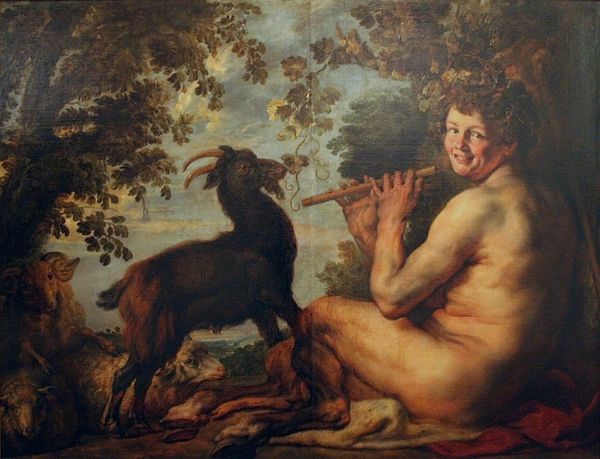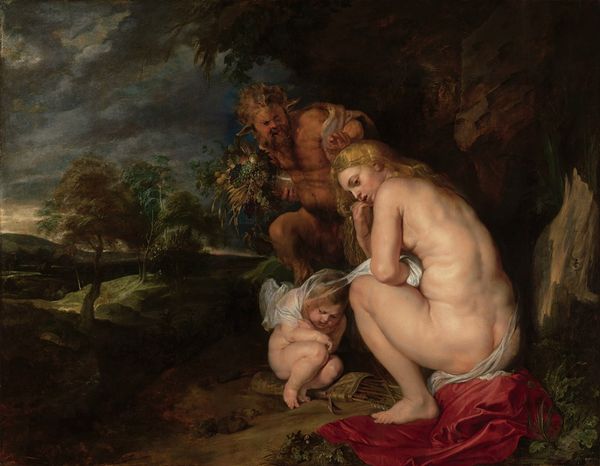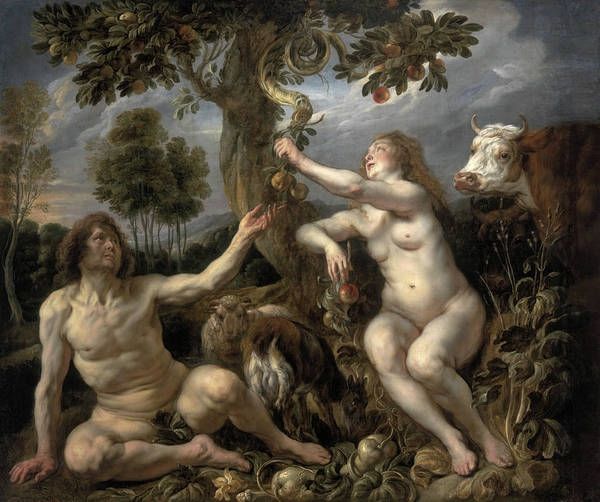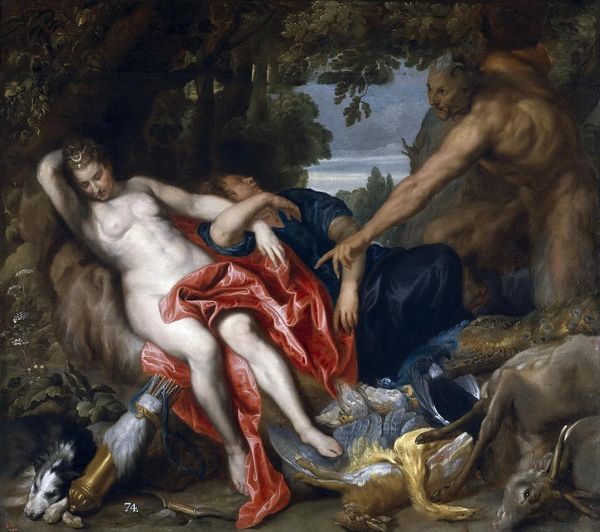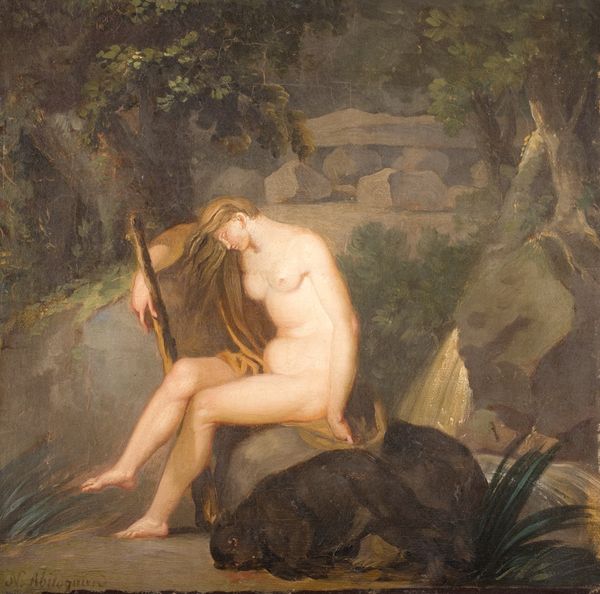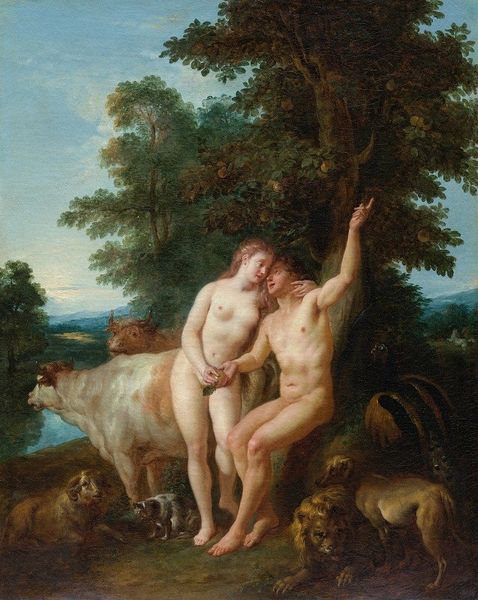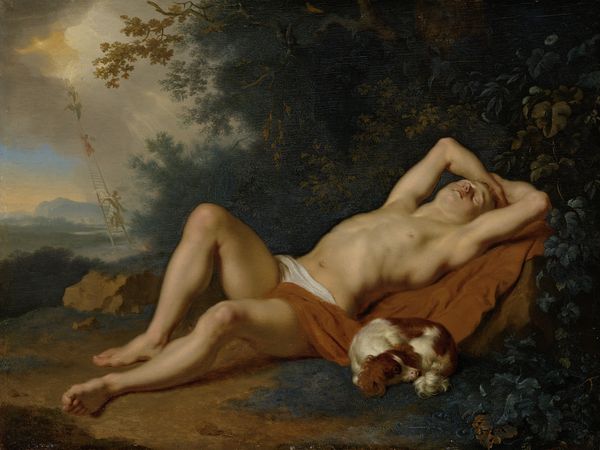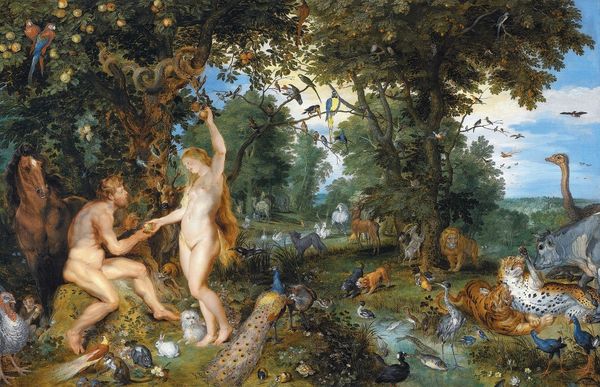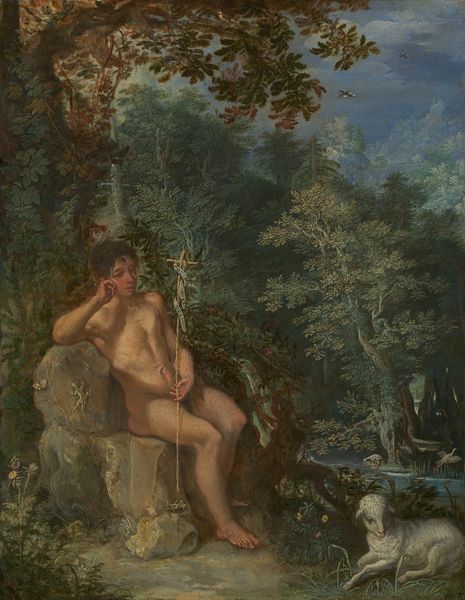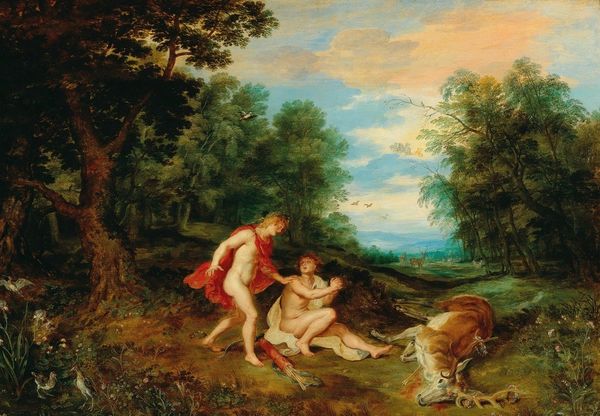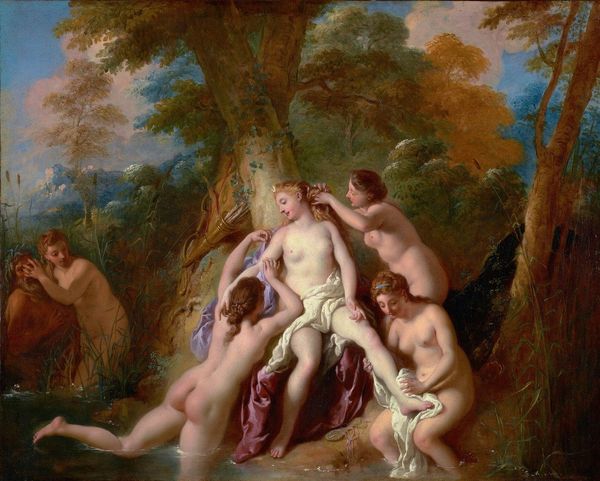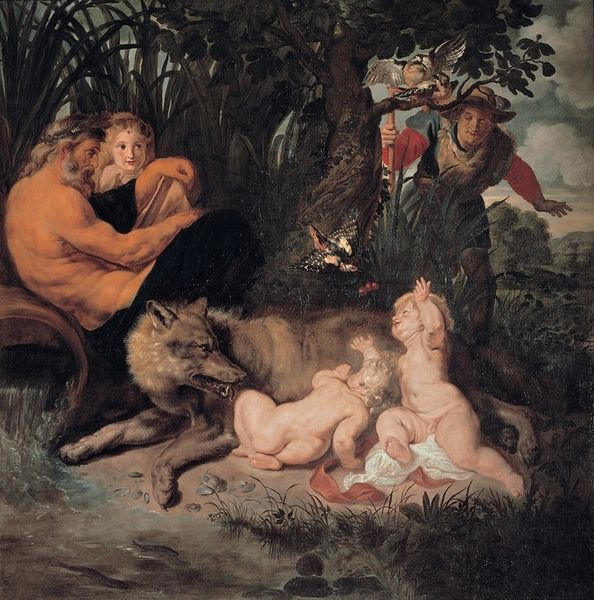
oil-paint
#
baroque
#
oil-paint
#
landscape
#
figuration
#
oil painting
#
genre-painting
#
nude
#
erotic-art
Dimensions: support height 133.4 cm, support width 173.8 cm, outer size depth 8.5 cm
Copyright: Rijks Museum: Open Domain
Editor: We are looking at "A Satyr," an oil painting made around 1630-1635 by Jacques Jordaens, at the Rijksmuseum. There's something really grounded about the painting because of its depiction of nature, the animals, and of course, the satyr himself. What jumps out at you when you see it? Curator: I immediately think of the pigments available to Jordaens and his workshop, the alchemical processes needed to derive the colour, the trade routes facilitating pigment distribution. Ultramarine, for example, would have been immensely expensive, made from Lapis Lazuli and would need to be imported, influencing its sparing application in this painting. Considering the context of 17th century Antwerp, how does the materiality of the piece impact our understanding of it? Editor: That’s an interesting question! I suppose I had never considered how access to specific colours might impact artistic decisions so directly. It's so much more than just personal choice. Curator: Precisely! And think of the canvas itself - likely linen, the product of flax cultivation and weaving, a significant industry. Each material tells a story. The tools Jordaens used, brushes made of animal hair, ground pigments, all these things reflect a certain level of labour, skill and resources. Are these everyday materials represented elevated or are elevated materials representing something mundane? Editor: So, looking at it this way, the painting becomes less about the mythological subject matter and more about... the social and economic networks that allowed it to exist. That does reshape my perception of Baroque art! Curator: Indeed! It encourages us to question traditional art historical narratives. It pushes us to move past “high art” to seeing it for the production that it really is. It brings to light, literally, the role of the labourers whose processes created it. Editor: That makes you think about the whole system. Thanks for broadening my view. Curator: It has broadened my own as well.
Comments
rijksmuseum about 2 years ago
⋮
In Greek mythology, satyrs – half-men and half-goats – were said to live in the woods and mountains. In 17th-century literature, they dwelt in the pastoral paradise of Arcadia, where one could lead a carefree life. The satyr here is presented as a shepherd of goats and sheep. He looks up from playing his flute to smile at the viewer.
Join the conversation
Join millions of artists and users on Artera today and experience the ultimate creative platform.
